So, you have finally decided to take the leap and get bangs! Whether you just want to spice up your hairstyle or go for something totally new, bangs can be a great option. Of course, cutting your own bangs can lead to disastrous results, so it is best to make an appointment with your stylist and tell her exactly what you have in mind.
There are several different types of bangs, but perhaps the most fundamental question is whether you will get thick bangs or thin bangs. Both have their pros and cons, and a lot of times it will depend on your hair texture and thickness and whether you want a wispy look or a bold look.
In this article, we will consider both thick bangs and thin bangs and different styles that can be achieved with either of those options.
Thick Bangs or Thin Bangs: Which One Should You Choose?

If you want a bold, chic look and your hair is thick, opt for thick bangs. They offer style versatility and work with all hair textures, but need more maintenance.
Alternatively, if you prefer a low-maintenance, classic look, and your hair is thin or thick, thin bangs are a good fit. They offer styling flexibility and are easier to manage, but might need more frequent washing due to possible oil buildup.
Consider your personal style, hair type, and the time you can commit to maintenance when choosing between thick and thin bangs.
Thick Bangs

If you are going for a bold, chic look, thick bangs may be just the thing for you! Of course, when they are cut into a certain style, it is difficult to style them any other way, so you want to be sure of what style you are looking for before you get them cut.
Thick bangs can pair well with curly hair, wavy hair, straight hair, long hair, and short hair, and they can suit any face shape!
Who Can Wear Thick Bangs?
Thick bangs are best suited for those with thicker hair. In order to achieve thicker bangs, your stylist will cut a larger section of hair, so your hair needs to be thick enough so that even with a larger section of hair in the bangs, the rest of your hair still looks full.
Really any texture of hair can look good with thicker bangs, so whether your hair is corkscrew curly, or board straight, thick bangs are an option for you.
What Are Some Different Styles of Thick Bangs?
There are several styles that you can achieve with thicker bangs. Just make sure that you tell your stylist what style you want before they cut your bangs, because once your bangs are cut into a certain style, it is very difficult to style them any other way.
Here are a few examples of thick bangs:
Thick Blunt, Straight-Across Bangs
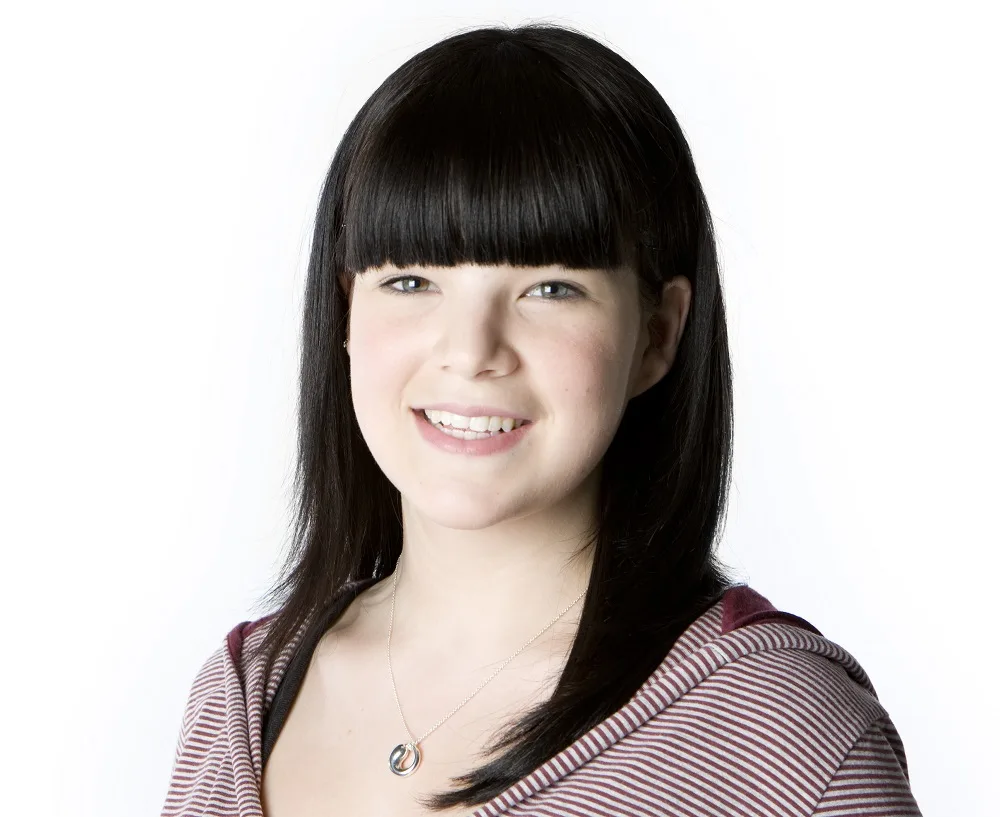
This blunt-cut (meaning no texture at the bottom), straight across bangs is a classic. Usually, this style works best with straight hair, as you can get the full effect of the perfectly even ends. Women with long-shaped faces can pull off these bangs best.
Thick Textured Bangs
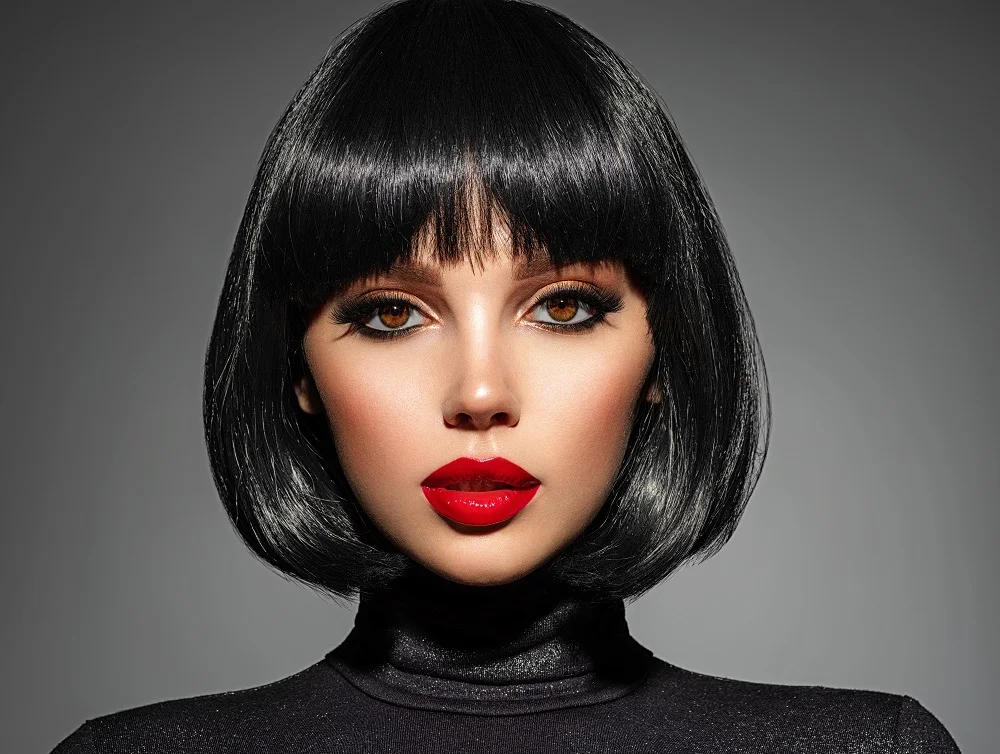
Just because your bangs are thick, doesn’t mean that they can’t have texture to them. Thick bangs with textured ends can give your hair more movement and make your bangs a bit easier to style.
This style works with any texture of hair. People with longer faces can pull off these bangs best.
Thick Rounded Bangs
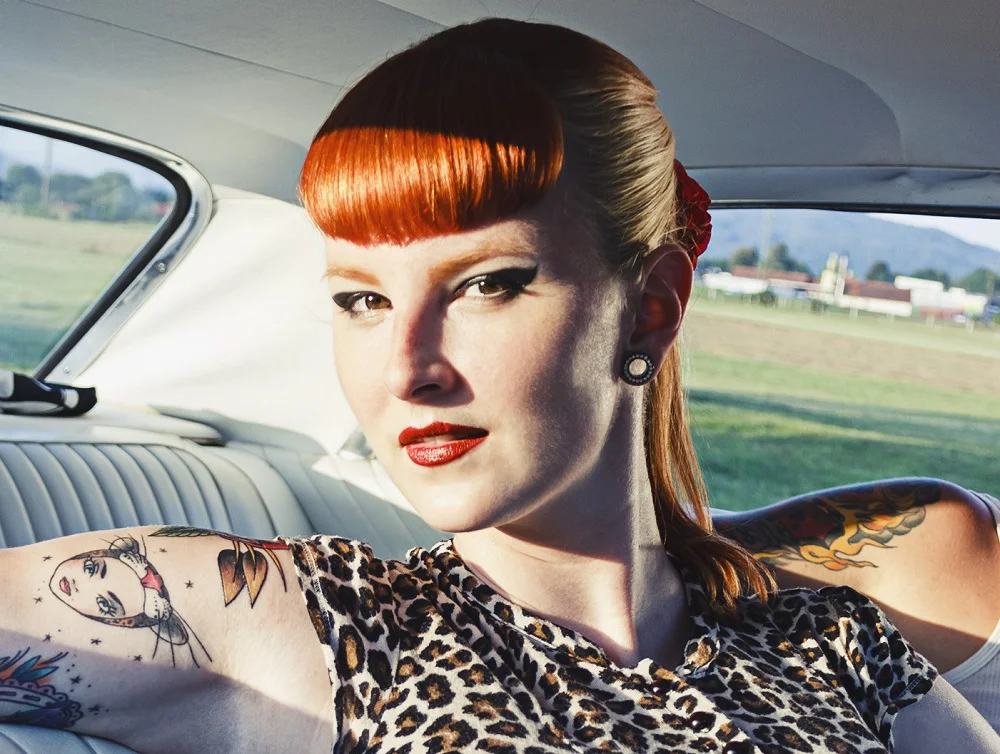
This style is reminiscent of the ’60s and has a trendy, “bowl-cut” look to it. These bangs are best suited for straight hair, because the edge of these bangs needs to be very precise.
Women with oval or rectangle-shaped faces can pull off these bangs best.
Thick Face-Framing Bangs

Thick, face-framing bangs can be a great option if you want a softer look that enhances your facial features.
There are different lengths and styles of face-framing bangs, so ask your stylist which one would suit you best! This style can work with any texture of hair, and it can suit longer or shorter face shapes.
Thick Curtain Bangs
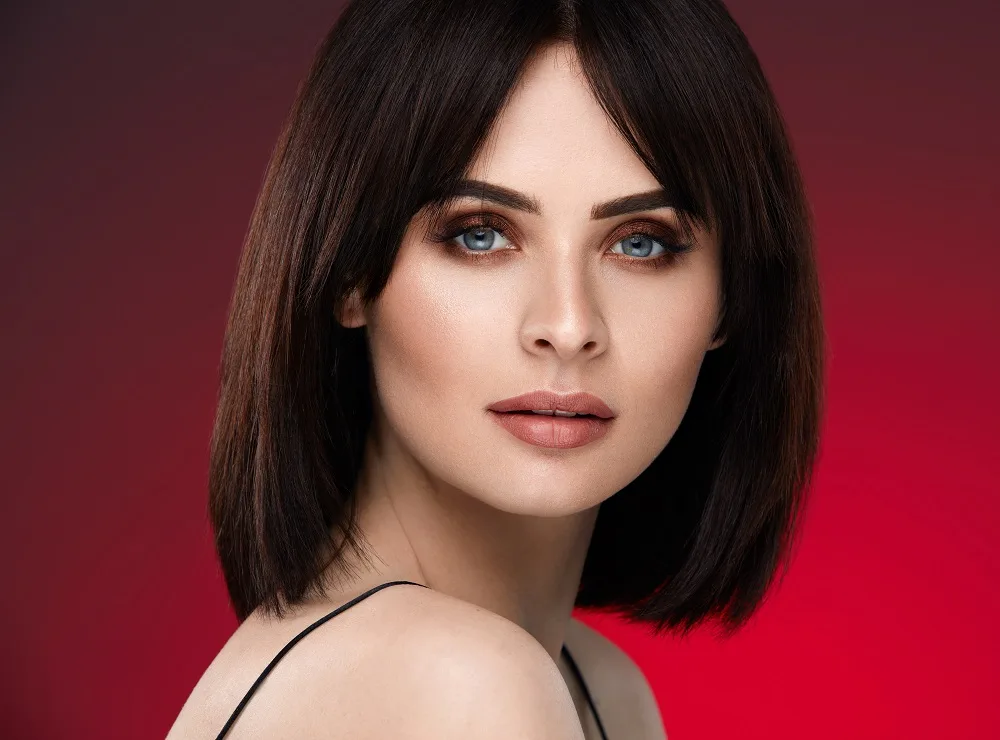
Curtain bangs are back in style, and they look absolutely gorgeous on thick, layered hair. This style is a great option if you would like a bit of face-framing and also want your bangs to look still great after they have grown out a bit.
Curtain bangs can be short or long! They look best on straight or wavy hair, and they suit shorter faces very well!
Thick Side Bangs
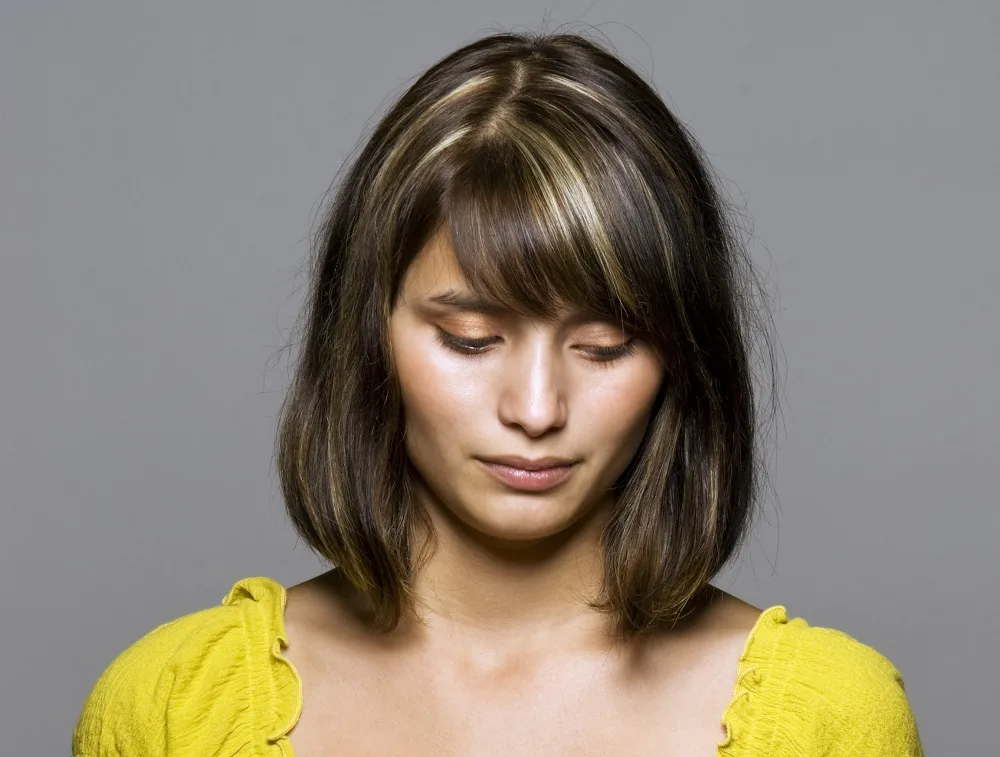
Side bangs are another classic, and they can be cut shorter or longer. Side bangs can work with most hair textures, and they can elongate shorter faces.
Also, they can be cut to be textured or blunt. Because of their versatility, side bangs are definitely a popular choice!
Tips for Styling Thick Bangs

Styling thick bangs can be a bit more challenging than styling thinner bangs. This is mostly because you are working with more hair, and trying to get all of it to agree with you!
(Bangs can have a mind of their own sometimes.) Also, people with thicker hair tend to have coarse hair as well, and coarse hair can be a bit more resistant to styling.
But, don’t despair! You can master the art of styling your thick bangs. Here are a few tips to help you along the way:
- Use plenty of products. You want to find a balance between not enough product and too much, and this can just be a matter of trial and error. If you are finding that your bangs aren’t holding their style, you need more product. If they feel greasy and are separating, you have used too much product.
- Use heat to train your bangs. If you are going for a very specific style, you may need to use a flatiron or a blowdryer and round brush to direct your bangs in the right direction. Over time, it will get easier to redirect your hair into the style you want.
- Don’t skip the trims. Because your bangs are thicker, you must keep up with getting regular bang trims for them to lay in the right spot. Usually, stylists will do a quick bang trim in between appointments for free or very cheap. When you get your new bangs cut, make sure to ask your stylist about their recommendation for how often you should go in to get a trim.
- Be patient! Because you are dealing with thicker (maybe even coarser) hair, it may take a few tries to get right. Your style may not turn out exactly how you want it the first few times you do it. That’s why it’s so important to be patient and adjust your products and methods before you throw in the towel. After all, you are stuck with your bangs until they grow out, so you might as well try to enjoy them.
- When styling thick, curly bangs, apply your curl products to your bangs as you would the rest of your hair. You can use a comb and your fingers to apply the product through your bangs and form your curls. To restyle your bangs, you will need to drench them with water or shampoo them so that you can start with a clean slate.
Summary of Thick Bangs
- Are best suited for thicker hair, whether coarse or fine.
- Can be cut into a variety of different styles.
- Require a bit more maintenance and effort than thinner bangs.
- Are suited for all hair textures.
Thin Bangs
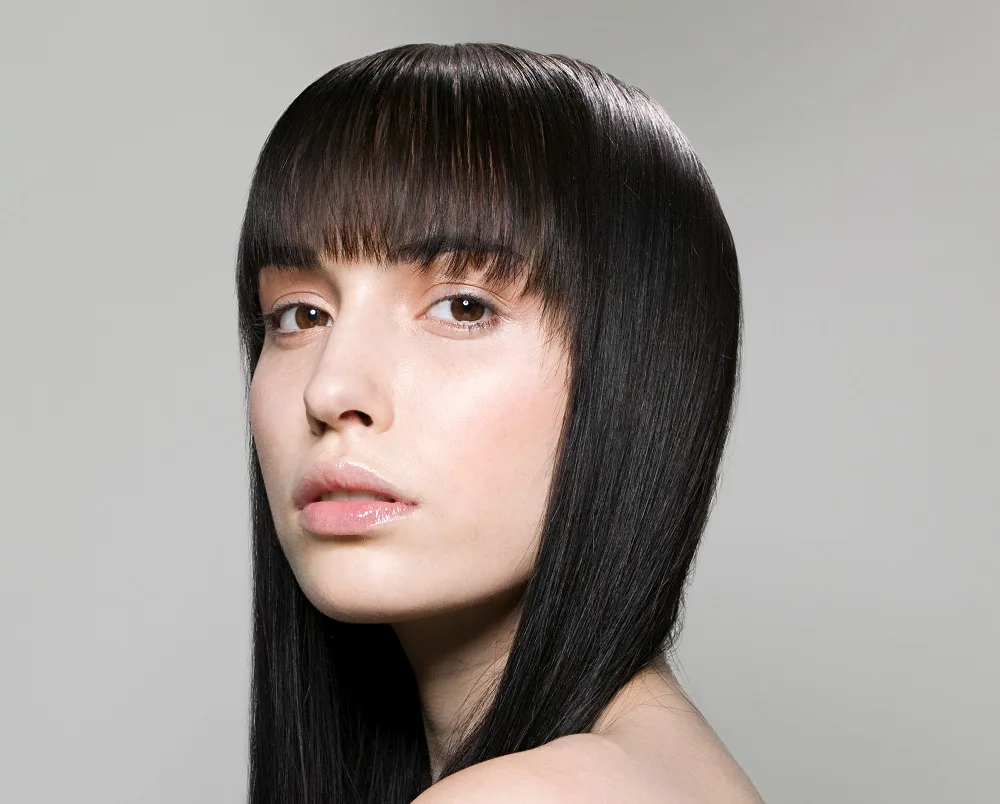
If you are going for a whimsical, classic, low-maintenance look, thin bangs may be just the thing for you! Thin bangs can be a bit more versatile than thicker bangs, because it is easier to move, redirect, and style them in different ways.
Just like thick bangs, thin bangs can pair well with curly hair, wavy hair, straight hair, long hair, and short hair, and they can suit many different face shapes.
Who Can Wear Thin Bangs?
Thin bangs can work for people with thinner or thicker hair. In order to achieve thinner bangs, your stylist will cut a smaller or more narrow section of hair. This is great for thinner hair, because you are able to have bangs without taking away a lot of the thickness from the rest of the head.
Thin bangs can also work for those with thick hair who want bangs without the maintenance of thicker bangs. Really any texture of hair can look good with thinner bangs, so whether you have ringlets, waves, or straight locks, thin bangs are an option for you.
What Are Some Different Styles of Thin Bangs?
There are several styles that you can achieve with thinner bangs. Because thin bangs are lightweight, they can usually be styled in a variety of ways, even if they are cut to mostly wear in a specific style.
Of course, it is always good to tell your stylist in what ways you plan to style your bangs so that they have an idea of what cut would work best for you.
Here are a few examples of thin bangs:
Thin Blunt, Straight-Across Bangs
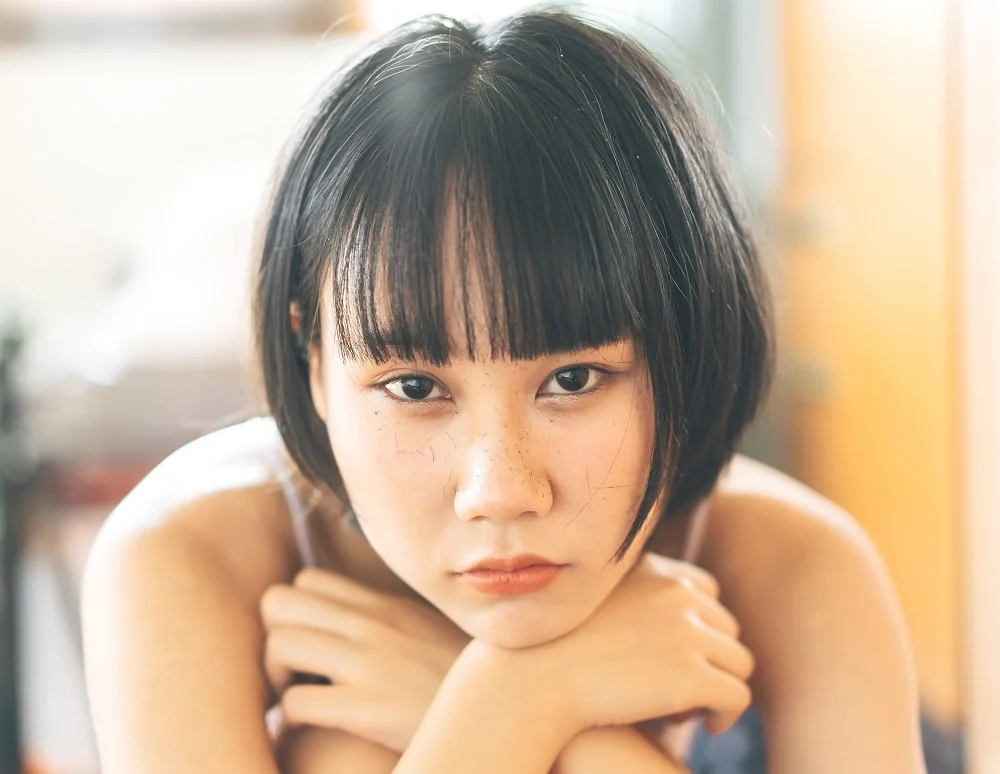
This blunt-cut (meaning no texture at the bottom), straight-across bangs are a classic and can work even for thin hair. If you have thin, blunt bangs, you may still be able to see a bit of texture in them, but that isn’t a bad thing!
Usually, this style works best with straight hair, as you can get the full effect of the perfectly even ends. Women with long-shaped faces can pull off these bangs best.
Thin Textured Bangs

Thin bangs are absolutely the best for showing off texture. Because they are thinner, they show a bit of texture whether you intend them to or not.
By cutting the ends of thinner bangs in various lengths, you add a wispy feel to them. This style works with straight, wavy, or curly hair. People with longer faces can pull off these bangs best.
Thin Rounded Bangs

Thinner, rounded bangs are perfect if you want to draw attention to your beautiful eyes. They have texture and style. Because they get longer right around the eye area, they make your eyes the main focal point. People with longer oval or rectangle-shaped faces can pull off these bangs best.
Thin Face-Framing Bangs
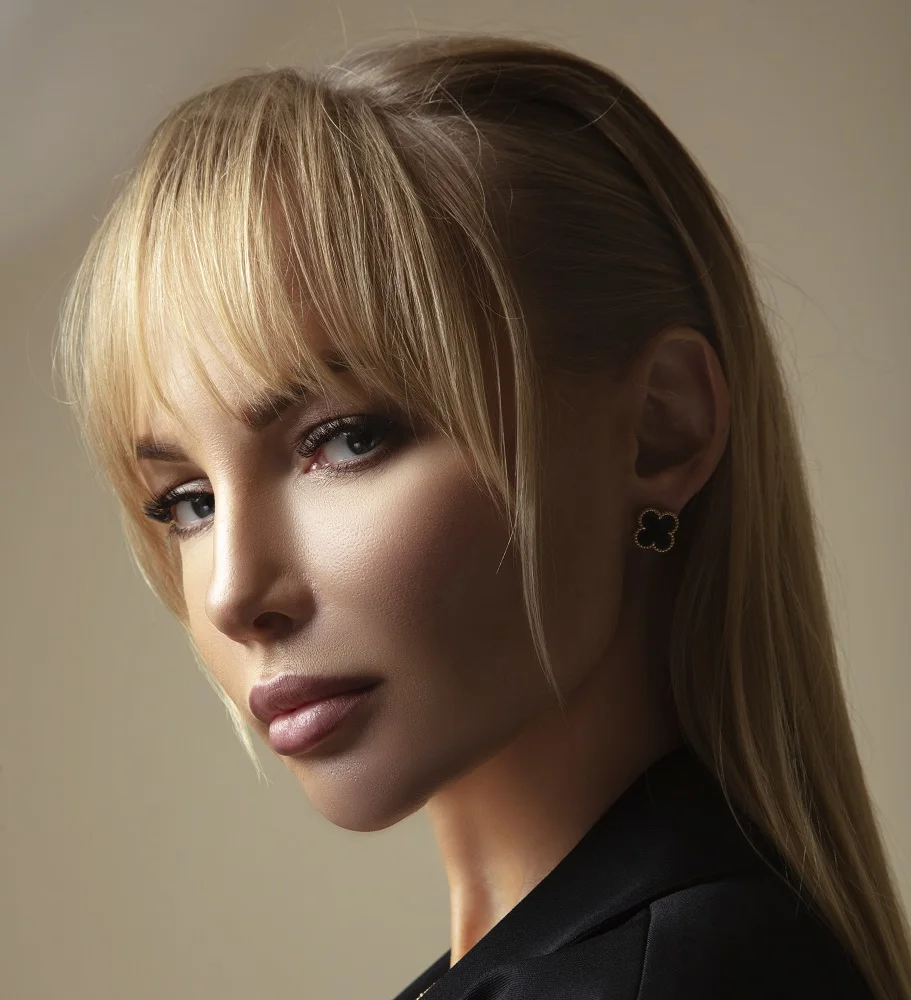
Thin, face-framing bangs can be a great option if you want a softer look that enhances your facial features. Usually thin, face-framing bangs look best with a hairstyle that has layers.
This gives your hairstyle an extra level of texture. These bangs can work with any texture of hair, and can suit longer or shorter face shapes.
Thin Curtain Bangs
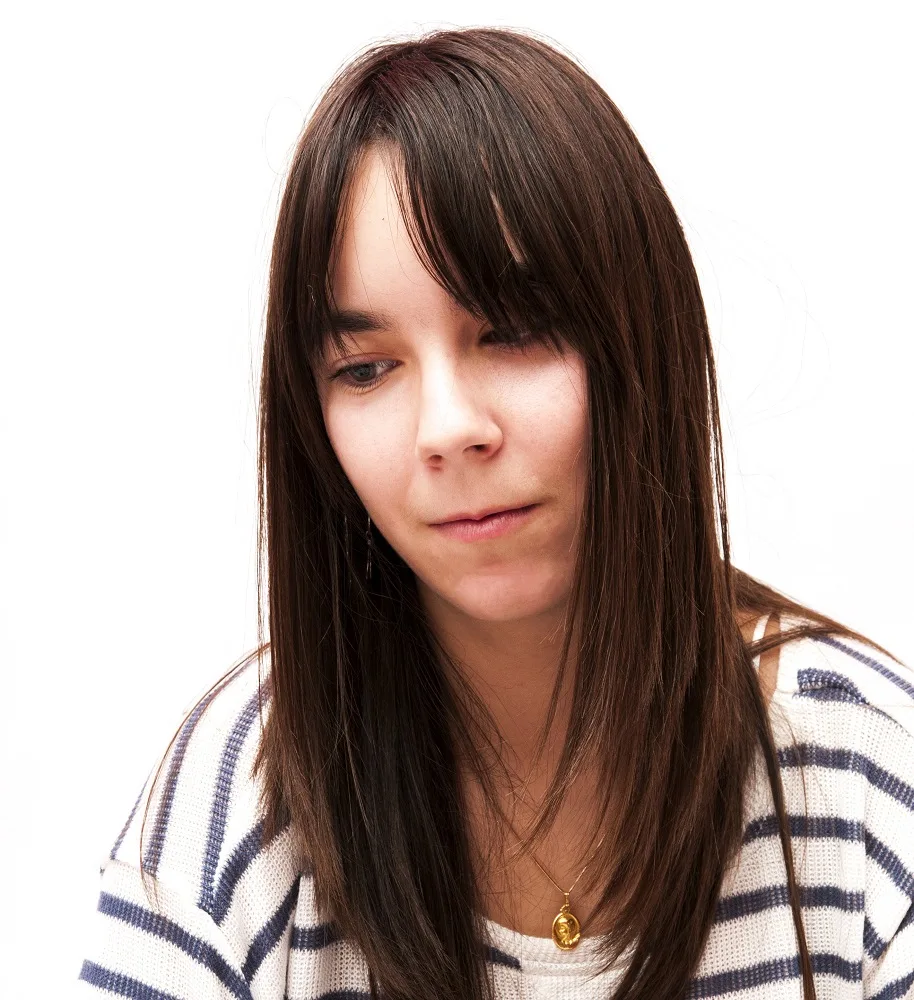
Curtain bangs are gorgeous on thick or thin hair, and they add even another level of low-maintenance to thinner bangs. This style is great if you want a bit of face-framing, but don’t want to commit to straight-across bangs.
They also look great when they are growing out, so you can feel free to skip the bang trims. Curtain bangs look best on straight or wavy hair, and they suit shorter faces very well!
Thin Side Bangs
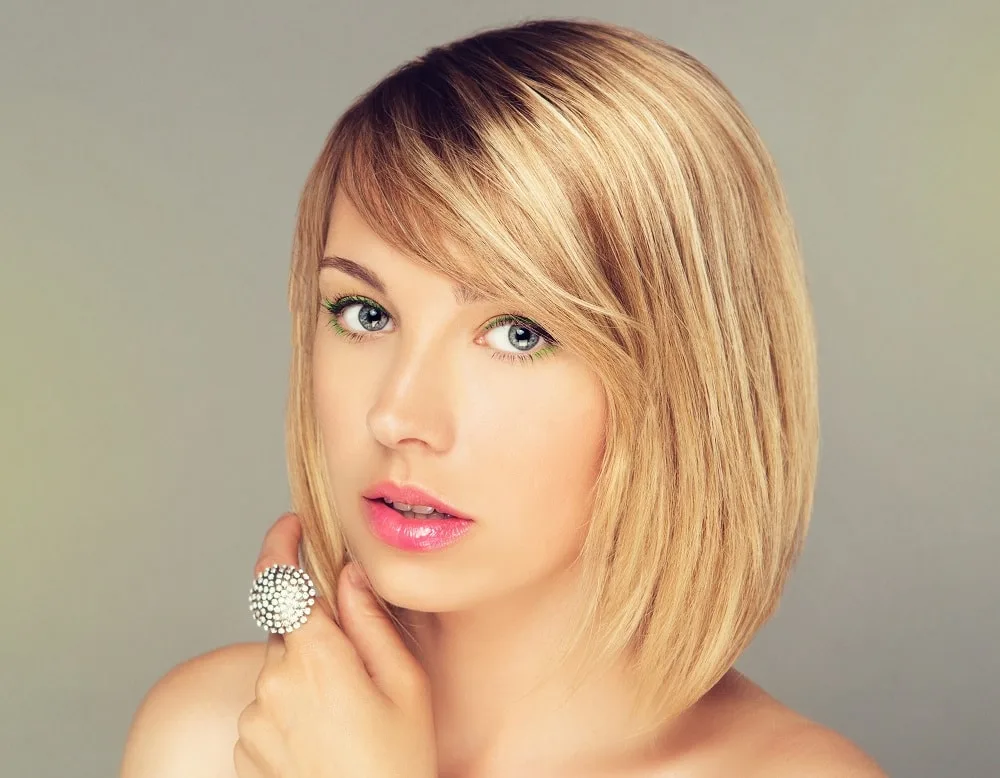
Side bangs are a classic, and they are very easy to achieve and style. If you want straight-across or face-framing bangs that can be pushed to the side, tell your stylist and they should be able to make it work!
Side bangs can work with most hair textures, and they can elongate shorter faces. They can also be clipped or pulled back easily if you want to get them out of the way.
Tips for Styling Thin Bangs
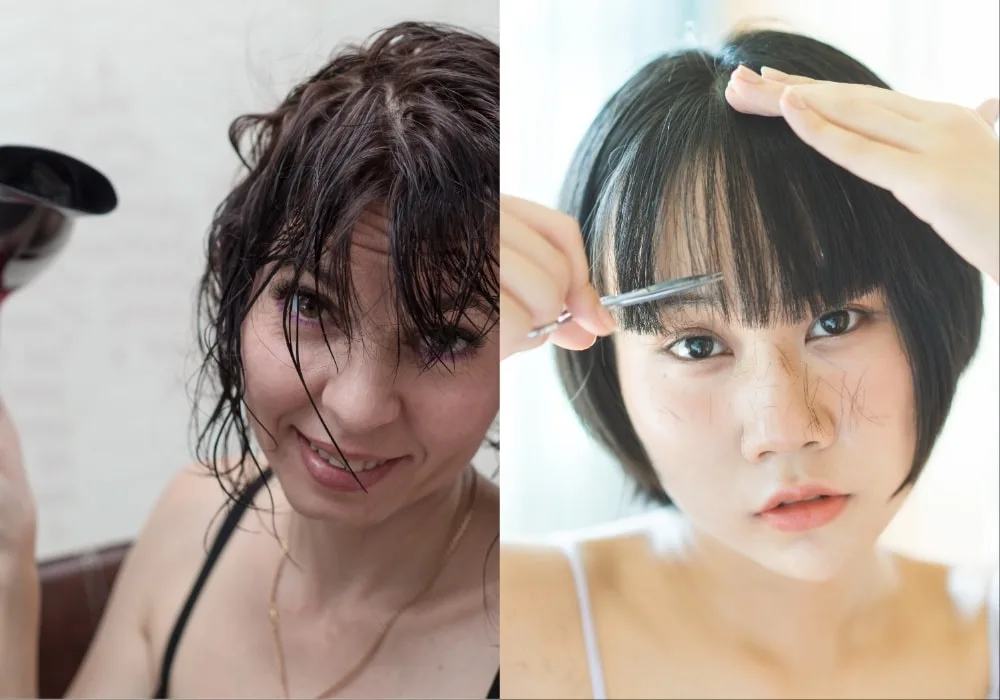
Styling bangs in general is not always easy, especially if your bangs are brand new, but the good news is that thin bangs are relatively easy to style in comparison with thick bangs.
Although bangs still have a mind of their own sometimes, with thinner bangs you are dealing with a bit less hair, so you have an advantage. Also, thin bangs tend to look just fine even if they aren’t “done.” A messy, textured look is sometimes the best way to go!
Here are a few tips you can use to help you style your thin bangs:
- Don’t use too much product. Thin bangs can easily be weighed down by excess product, especially if your hair is also fine. Of course, you will need enough product to hold your style, but adding too much product can make your bangs greasy and weighed down. You may need to experiment to see what amount and type of product works best for you.
- Use heat to train your bangs. but not too much heat. Even thin bangs can be a bit stubborn at times, so you may need to use a flatiron, or a blowdryer and round brush to style them in the direction you want. Just be careful not to fry your bangs. You are only working with a small amount of hair, so using too much heat can scorch it. Try using a lower heat setting first, and increase it little by little until you are able to achieve the style you want.
- Keep your bangs clean. Thin bangs can get oily and dirty quicker, so you may have to shampoo them more than you shampoo the rest of your hair. You can do this easily by clipping the rest of your hair back and shampooing your bangs when you wash your face. You may or may not choose to use conditioner depending on how oily your bangs get. If you do use conditioner, try to apply it only to the ends of your bangs to avoid weighing them down.
- Don’t trim them yourself! Your bangs are front and center on your face, so trimming them yourself is a huge gamble. To avoid disaster, it is always best to ask your stylist if they can trim your bangs. Usually, stylists will perform this service for cheap or even free if you come in between your normal haircuts or other services.
- When styling curly, thin bangs, apply your curl products to your bangs as you would the rest of your hair. Your curly bangs may need a little help, so using your finger to create ringlets might be necessary, depending on the type of curls you have. To restyle your bangs, simply wet them, or shampoo them, and style again.
Summary of Thin Bangs
- Are best suited for thinner hair, whether coarse or fine.
- Can be cut into a variety of different styles.
- Require a bit less maintenance and effort than thicker bangs.
- Are suited for all hair textures.
Key Differences Between Thick Bangs and Thin Bangs
The table below helps show both the differences and similarities between thick and thin bangs.
| Thick Bangs | Thin Bangs |
| Require regular, scheduled trims | May require occasional trims when needed |
| Require more heat and product | Require less heat and product |
| Can suit any hair texture | Can suit any hair texture |
| Can be cut to suit most face shapes | Can be cut to suit most face shapes |
| Can be cut bluntly or with more texture | Tend to show texture in most cuts |
To Summarize
Bangs can be a great addition to any hairstyle and are suited for just about any face shape and hair texture. Of course, the type of bangs you get will depend on the texture and density of your hair, and the look you are trying to achieve.
Different types of bangs may require more maintenance than others, so it is also important to be honest with yourself about how much work you want to put into styling your hair every day. We know that no matter what you choose, you will look absolutely gorgeous!
